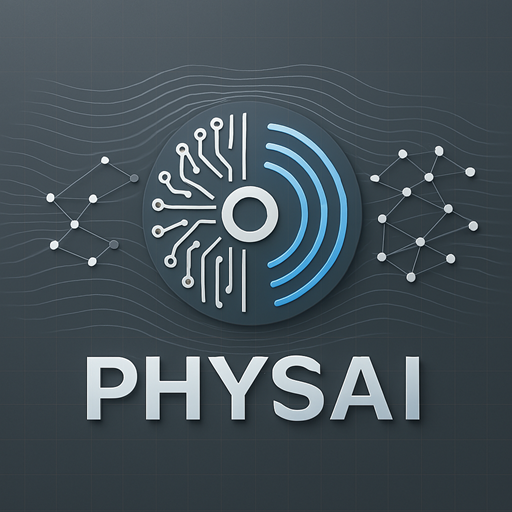COMSOL Multiphysics for Medical Device Innovation
The development of next-generation medical devices requires the careful interplay of multiple physical phenomena. From implantable electronics to diagnostic probes and therapeutic ultrasound systems, advanced simulation tools play a vital role in ensuring safety, efficacy, and regulatory compliance.
COMSOL Multiphysics® provides a unified environment where coupled physics models can be built, refined, and validated. Below we outline how several key physics domains are directly applicable to modern medical device engineering.
Acoustics
See the dedicated Acoustics page for more information
Acoustics plays a central role in medical diagnostics and therapy. Technologies such as ultrasound imaging, lithotripsy, and acoustic tweezers all rely on precise control of wave propagation, scattering, and nonlinear interactions within biological tissues.
- Ultrasound Imaging: Simulate acoustic pressure fields and beamforming patterns to optimize probe geometry and frequency for image clarity and depth penetration.
- Therapeutic Ultrasound: Model high-intensity focused ultrasound (HIFU) to predict tissue heating and cavitation thresholds.
- Sensor Design: Evaluate piezoelectric transducer coupling and impedance matching for maximum sensitivity.
- Attenuation Modeling: Quantify frequency-dependent losses in tissue to guide signal processing algorithms.
Microfluidics
See the dedicated Microfluidics page for more information
Point-of-care diagnostics and lab-on-a-chip devices rely heavily on fluid transport at micro- and nanoscales. COMSOL's capabilities in fluid-structure interaction, electrokinetics, and surface tension-driven flow allow for detailed prototyping of integrated microfluidic systems.
- Capillary Flow: Model spontaneous wicking through porous membranes or narrow channels.
- Electroosmotic Pumps: Couple electric fields with fluid flow for compact pumping mechanisms.
- Particle Tracking: Simulate trajectories of blood cells or biomarkers within flow channels for detection accuracy.
- Membrane Filtration: Predict flow resistance and fouling in dialysis or separation devices.
Electromagnetics
Electromagnetic modeling is essential across the frequency spectrum, from low-frequency neural stimulation to high-frequency MRI systems. COMSOL enables detailed evaluation of EM field distributions, device shielding, dielectric heating, and RF safety.
- RF Ablation: Simulate tissue heating from current densities and electric field penetration in treatment planning.
- Wearable and Implantable Devices: Analyze antenna performance and SAR distribution in proximity to tissue and bone.
- Magnetic Resonance Imaging (MRI): Model RF coils, B1 field uniformity, and eddy current effects to optimize imaging resolution and patient safety.
- Electrostimulation: Predict electric field lines and transmembrane potentials for nerve activation thresholds.
Plasma Physics
See the dedicated Plasma page for more information
Cold atmospheric plasmas are emerging in sterilization, wound healing, and surgical applications. These systems involve complex plasma–surface interactions, ionization dynamics, and thermal effects—all of which can be analyzed with COMSOL’s plasma physics and fluid dynamics modules.
- Sterilization Devices: Model plasma jet interaction with surfaces, ozone production, and pathogen inactivation rates.
- Tissue Ablation: Simulate localized plasma arcs and joule heating effects in precision cutting tools.
- Electrode Design: Analyze sheath formation, ion density, and voltage drops for improved performance.
Heat Transfer
Temperature control is fundamental to biocompatibility and safety in many medical procedures. Whether it’s monitoring tissue damage during ablation or controlling cooling in cryogenic treatments, COMSOL offers comprehensive heat transfer modeling.
- Thermal Ablation: Couple Joule heating or ultrasound dissipation with bioheat transfer equations to predict thermal lesion size.
- Cryotherapy: Simulate phase change and ice crystal formation in tissue during controlled freezing.
- Device Cooling: Design active or passive cooling systems for electronics embedded in wearable or implantable devices.
- Temperature-Dependent Material Behavior: Capture thermomechanical expansion or degradation of polymers and gels under heating.
Multiphysics and Equation-Based Modeling
The true strength of COMSOL lies in its ability to couple multiple physics interfaces into a single model. This includes not only built-in couplings but also custom partial differential equations (PDEs) for user-defined physics. This capability is indispensable in scenarios where novel device concepts stretch beyond standard physics boundaries.
- Custom Constitutive Models: Define non-linear viscoelasticity, poroelasticity, or non-Newtonian flow using user equations.
- Coupled Thermal–Mechanical–Electrical Systems: Simulate implants or surgical tools that undergo mechanical strain and thermal cycling while powered electrically.
- Inverse Modeling and Optimization: Use adjoint sensitivity analysis or parameter estimation to back-solve for material properties or control inputs.
- Data-Driven Physics: Integrate COMSOL models with external neural networks, control systems, or real-time measurements through LiveLink™ interfaces.
Conclusion
From benchtop diagnostics to implantable therapies, medical devices are increasingly shaped by the rigorous insights that multiphysics modeling provides. COMSOL Multiphysics empowers engineers, physicists, and researchers to virtually prototype, test, and refine complex devices before they reach clinical trials—saving time, cost, and enhancing innovation.
